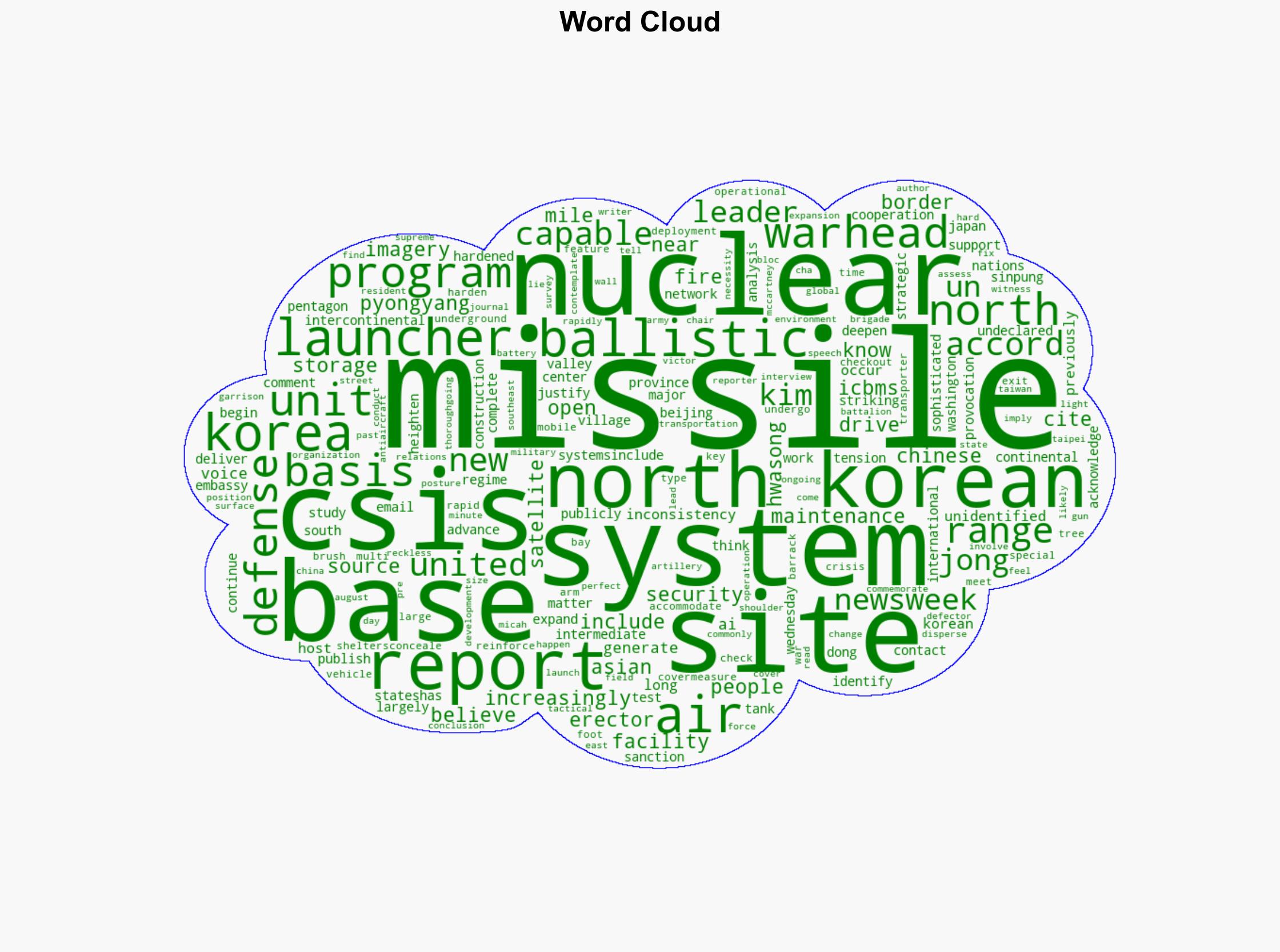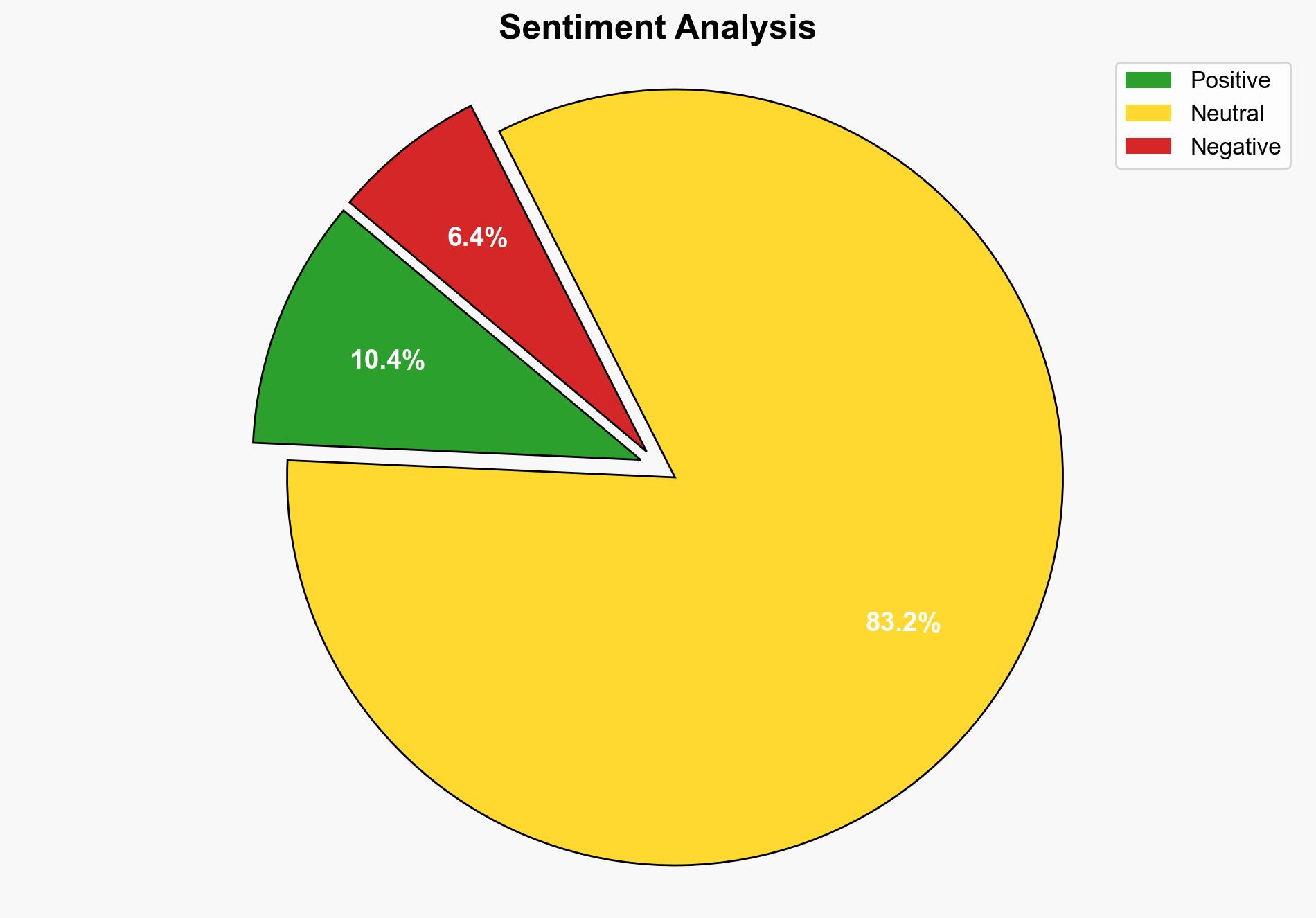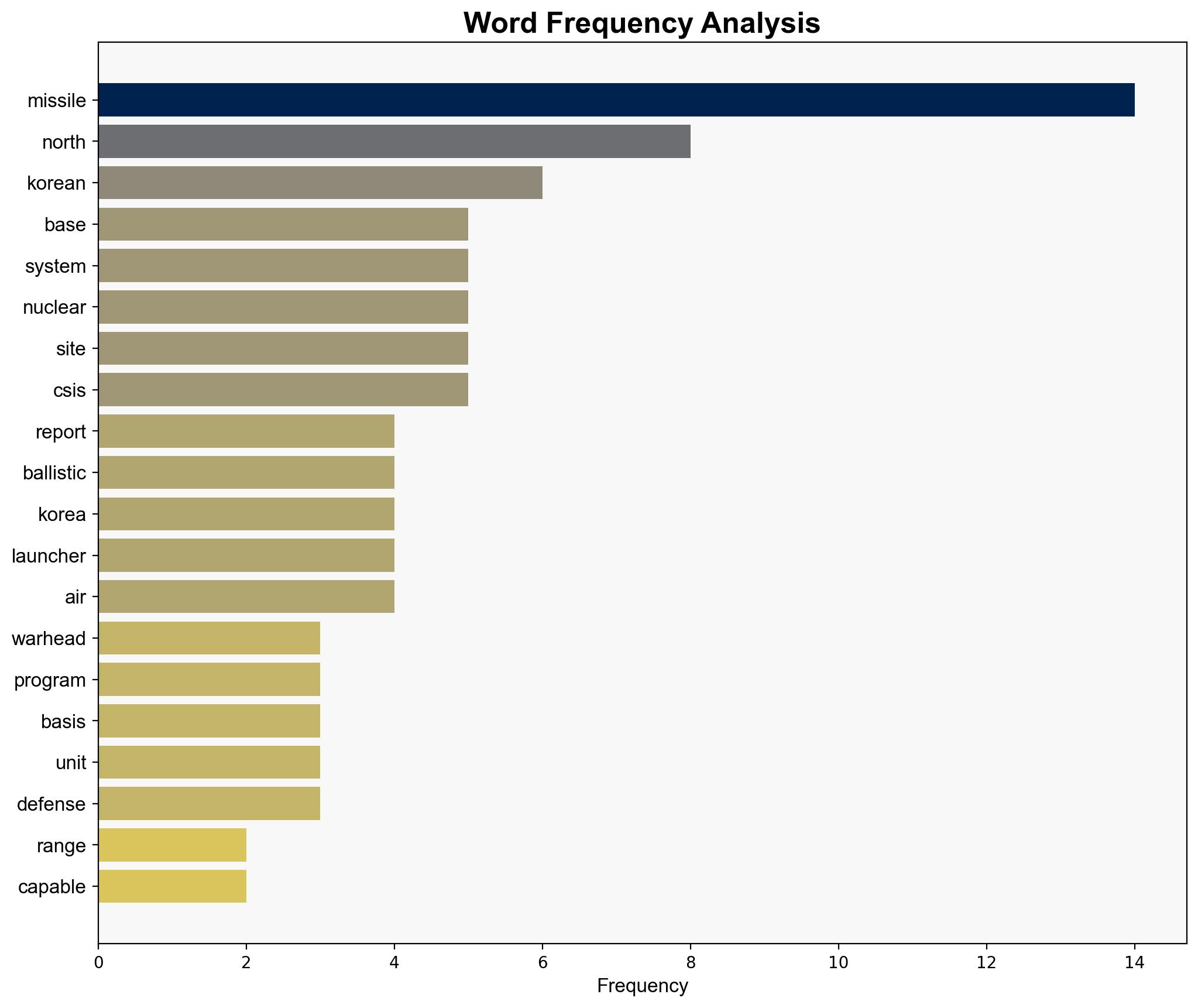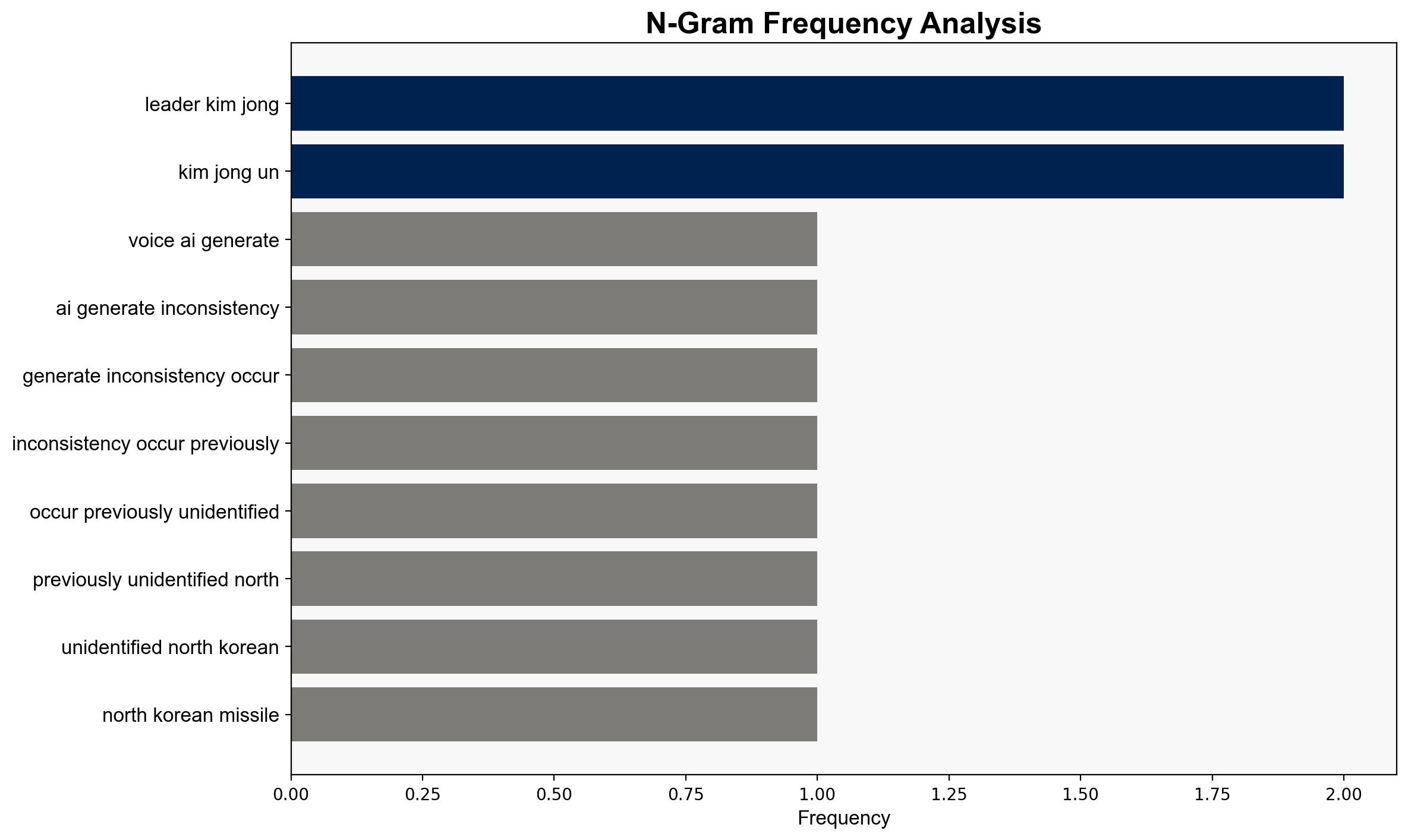New North Korean ‘Nuclear Threat’ to US Homeland Identified – Newsweek
Published on: 2025-08-21
Intelligence Report: New North Korean ‘Nuclear Threat’ to US Homeland Identified – Newsweek
1. BLUF (Bottom Line Up Front)
The identification of a previously undisclosed North Korean missile base capable of striking the US mainland represents a significant escalation in regional and global security threats. The most supported hypothesis suggests that North Korea is advancing its strategic deterrence capabilities to counter perceived threats and enhance its bargaining position. Confidence level: Moderate. Recommended action: Increase intelligence surveillance and diplomatic engagement with regional allies to mitigate risks.
2. Competing Hypotheses
1. **Hypothesis A**: North Korea is expanding its missile capabilities to enhance its strategic deterrent against the US and its allies, aiming to secure regime survival and leverage in international negotiations.
2. **Hypothesis B**: The missile base development is primarily a domestic propaganda tool to consolidate internal power and demonstrate military prowess, with limited immediate operational intent against the US.
Using ACH 2.0, Hypothesis A is better supported due to the strategic location near the Chinese border, the sophistication of the missile systems, and ongoing missile tests. Hypothesis B lacks support given the operational readiness indicated by the infrastructure and satellite imagery.
3. Key Assumptions and Red Flags
– **Assumptions**: North Korea’s actions are rational and strategically motivated. The base is operational and intended for offensive capabilities.
– **Red Flags**: Potential deception in satellite imagery interpretation. Lack of direct confirmation from North Korean sources.
– **Blind Spots**: Limited human intelligence from within North Korea. Potential Chinese involvement or tacit approval remains unclear.
4. Implications and Strategic Risks
The development heightens regional tensions, particularly with South Korea and Japan, potentially triggering an arms race. It may also complicate US-China relations if perceived as a threat to regional stability. Cyber threats could increase as North Korea seeks asymmetric advantages.
5. Recommendations and Outlook
- Enhance satellite and cyber intelligence capabilities to monitor North Korean military developments.
- Strengthen diplomatic ties with South Korea and Japan to present a unified front.
- Engage China in dialogue to address regional security concerns and prevent escalation.
- Scenario Projections:
- Best: Diplomatic negotiations lead to de-escalation and arms control agreements.
- Worst: Military confrontation triggered by miscalculation or provocation.
- Most Likely: Continued missile development with periodic diplomatic engagement.
6. Key Individuals and Entities
– Kim Jong Un: North Korean leader, central to strategic decisions.
– Victor Cha: Author of the CSIS report, providing analysis on the situation.
7. Thematic Tags
national security threats, cybersecurity, counter-terrorism, regional focus





